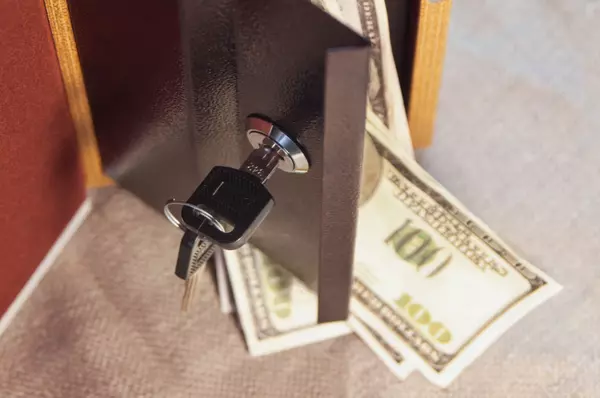

Unlocking Your Financial Freedom: Top Mortgage Payoff Hacks to Know
Unlocking Your Financial Freedom: Top Mortgage Payoff Hacks to Know Introduction: Start Paying Off Your Mortgage Sooner and Smarter Buying your home ranks as a towering milestone. Still, it brings the hefty weight of a long-term mortgage. While these payments gnaw at your monthly budget, your dream of financial liberation teeters on speeding up that payoff. Good news, though! You've got some slick strategies at your disposal that could not only lighten the load but also pocket you thousands in saved interest, slashing years off your mortgage. Here's why hustling that mortgage payoff is a smart move: every buck you save on interest boosts your savings, and full ownership means solid financial stability and a calm mind. Whether you’re a newbie homeowner or you’re rejigging your finances, getting a grip on these tactics could radically shift your payment timeline. We’re diving into some savvy tips and tricks to fast-track your mortgage payoff, opening the door to your financial freedom sooner. Fast Track Your Mortgage with Bi-Weekly Payments Kicking off one of the easiest yet knockout strategies to crush your mortgage early is the bi-weekly payment plan. Shift away from the usual monthly payment; instead, throw half that amount at your mortgage every two weeks. Sounds like just a tweak, right? Yet, this small shift packs a hefty punch in shrinking your mortgage. How It Rolls Out This strategy fits neatly with the weeks in a year, leading you to make 26 half-payments—that's 13 full payments yearly. This simple twist essentially squeezes in an extra full payment every year without straining your wallet. That extra payment? It dives straight into cutting down your principal, chopping the total interest you cough up over your mortgage’s lifespan. Why It Rocks Slice Through Interest: Cutting down the principal faster means less interest piling up, saving you a tidy sum over time. Shorten Your Mortgage Journey: Those extra payments shave years off your mortgage term, speeding your path to outright ownership. Boost Your Home Equity Quick: With faster payments, your equity swells sooner, handy if you need to tap into it for other financial ventures. Making It Happen Check with Your Bank: Always verify with your lender that they're cool with bi-weekly payments and won’t slap you with penalties. Go Automatic: Ease into it by setting up auto-debits from your bank every two weeks, keeping you on track without fuss. Tweak Your Budget: Adjust your monthly financial plan to handle this increased payment frequency smoothly. Adopting a bi-weekly payment routine is more than just inching toward mortgage freedom; it’s a strategic upgrade to your overall financial health with barely a dent in your daily spending—a solid move for anyone dead set on diminishing their mortgage load. Supercharge Your Payoff with Lump Sum Payments Diving into another potent tactic to fast-forward your mortgage payoff: lump sum payments. This approach involves dropping additional hefty sums directly onto your mortgage’s principal at set times—think annually or semi-annually. These beefy payments can massively cut down the interest you fork out across the loan's life and trim the duration of your mortgage. Here’s the Scoop Lump sum payments knock down your mortgage’s principal—that's the chunk interest is calculated on. Lowering this amount early in your loan’s life reduces the total interest you’ll pay, as all future interest computations are pegged to a diminished principal. Just a handful of these chunky payments early on can majorly lessen the overall cost of your mortgage. Why It’s a Game-Changer Trim Down Interest: Majorly cut the total interest you pay over your mortgage’s life. Stay Flexible: You can make these payments when extra cash rolls in—like from a tax return, a bonus, or any unexpected cash windfalls. This adds a nice flex to how and when you boost your mortgage payments. Cut Your Mortgage’s Timeline: Much like bi-weekly payments, these big drops in your balance can also reduce how long you’re paying off your mortgage, speeding up your journey to full homeownership. Making It Stick Plan for Extra Cash: Keep an eye out for times when you might snag some extra cash and plan to throw a portion—or all—of it at your mortgage. Talk to Your Lender: Double-check that there aren’t any prepayment penalties that might nibble away at the perks of making lump sum payments. Keep Tabs on Your Finances: Regularly evaluate your finances to spot chances to make lump sum payments without messing up your other financial aims. Leveraging lump sum payments takes a bit of financial savvy and foresight but can be hugely beneficial. By occasionally making these large payments towards your mortgage, you not only save on interest but also step closer to the dream of fully owning your home. Refine Your Mortgage with Refinancing Refinancing your mortgage is a shrewd tactic not just for lowering your interest rate but also for speeding up your mortgage payoff. This move means replacing your current mortgage with a fresh loan, potentially under sweeter terms thanks to market shifts or an uptick in your credit score. Breaking It Down In the refinancing game, you secure a new mortgage that wipes out the old one. This new loan might offer a lower interest rate, a different term, or both. If you're aiming to ditch your mortgage debt faster, consider flipping from a 30-year to a 15-year term. This switch could bump up your monthly payments, but with a lower rate and a shorter term, you’ll end up paying way less interest over the loan’s life. Why It’s Worth It Dial Down Interest Rates: Refinancing might drop your rate, reducing what you pay in interest each month. Shorten Your Debt Timeline: Opting for a shorter-term mortgage through refinancing means you could clear your debt sooner, despite possibly higher monthly payments. Tailor Your Loan: Refinancing lets you tweak your mortgage features to better match your current financial needs or goals—like moving from an adjustable-rate to a fixed-rate mortgage. How to Nail It Watch Rate Trends: Keep your eyes peeled on interest rate movements to time your refinancing when rates dip below your current mortgage’s rate. Weigh the Costs: Remember, refinancing typically includes closing costs and fees. Make sure the potential savings are worth these expenses. Check Your Financial Health: Make sure you’re financially fit to handle higher monthly payments if you shift to a shorter loan term. Refinancing isn’t for everyone, but under the right conditions, it can be a powerhouse strategy to cut both your interest rate and your mortgage term, vastly improving your journey towards financial freedom. Leverage Your Home Equity for Quicker Payoff Harnessing your home equity is another savvy move to push your mortgage payoff forward. As you chip away at your mortgage and your property’s value climbs, you amass equity—the gap between your home’s market worth and what you still owe. You can mobilize this equity through different financial avenues to accelerate your mortgage reduction. The Mechanics Dip into your home equity via a Home Equity Line of Credit (HELOC), a second mortgage, or a cash-out refinance. Each path offers you a slice of your equity in cold hard cash, ready to be plowed back into slashing your mortgage principal. This direct cutback not only reduces your debt but also trims the total interest you’ll pay over the loan’s span. Perks to Ponder Flexible Payment Options: Getting a lump sum through home equity gives you a powerful tool to significantly lower your mortgage balance. Tax Advantages: Interest on HELOCs or second mortgages might be tax-deductible. However, it’s wise to chat with a tax advisor to get the latest scoop on IRS regulations. Smart Financial Leveraging: Using your home equity smartly lets you leverage a major asset—your home—to reach significant financial milestones quicker, like paying off your mortgage. Tips for Effective Implementation Assess Your Finances Carefully: Make sure you’re in a stable financial spot to handle the extra payments that come with tapping into your home equity. Seek Expert Advice: Talk to financial advisors to figure out the best strategy for utilizing your home equity without endangering your financial future. Know the Stakes: Remember, borrowing against your home equity puts your property at risk if you can’t keep up with the payments. Having a solid repayment strategy is critical. Employing your home equity to expedite your mortgage payoff is a potent strategy, but it demands thorough thought and management to make sure it fits well with your broader financial objectives. Cross the Finish Line to Mortgage Freedom Sealing the deal on your mortgage early is a monumental move that reshapes your financial landscape for the better. The tactics we've explored—bi-weekly payments, lump sum contributions, refinancing, and tapping into home equity—are not just practical; they're powerhouse methods that cut down the interest and shrink the timeline of your mortgage. Each strategy has its unique perks and can be customized to mesh with various financial scenarios and ambitions. The secret sauce to mastering these mortgage hacks? It's a mix of financial grit, strategic foresight, and continual checks on your fiscal health. By being proactive and making savvy choices, you can significantly speed up your march toward full homeownership. This isn’t just about saving coins; it’s about securing peace of mind and a sturdier financial future. Keep in mind, sprinting to mortgage freedom is more like a marathon—it demands endurance, dedication, and smart plays. Kick off by taking a hard look at your current financial standing, pinpoint the strategies that resonate with your goals, and take bold steps to diminish your mortgage. With every move you make, you're unlocking new doors to vast financial freedom.
Read More

Unlock Savings: 4 Strategic Moves to Reduce Your Mortgage Costs
Getting a Grip on Your Mortgage: More Than Just Monthly Payments For many of us, a mortgage is much more than a monthly expense—it's likely the heftiest financial commitment we'll ever make. But don't let that intimidate you! In our guide, "Unlock Savings: 4 Strategic Moves to Reduce Your Mortgage Costs," we're diving into some savvy strategies that could dramatically lighten your mortgage load. We're talking about real, practical steps that could save you big bucks over the life of your loan, maybe even shaving years off your mortgage and boosting your financial freedom. Whether you've just hung your new home's welcome sign or you're a seasoned homeowner looking to tweak your mortgage strategy, stick with us. We’ll show you how to navigate your payments and slash overall costs, turning that daunting debt into a well-managed milestone. 1. Mastering the Refinance: Timing Is Everything Ever thought about refinancing your mortgage? If you're aiming to cut down on those monthly payments and the total interest you’ll pay in the long run, snagging a lower interest rate could be your golden ticket. But here’s the million-dollar question: When's the best time to make your move? Generally, if you can knock at least 0.75% to 1% off your current rate, it's worth a look. This small percentage can pack a punch—imagine saving about $173 every month on a $300,000 loan, adding up to a whopping $62,000 over 30 years! Why Consider Refinancing? Market rates swing with the economic winds, and catching them at a low can feel a bit like winning the lottery. Dropping your rate from 4.5% down to 3.5% not only pads your wallet but might also let you switch from an adjustable-rate mortgage to one that’s fixed, bringing some much-needed predictability to your budget. What's Involved? Refinancing means your old mortgage is out, and a new, friendlier one moves in. It’s like rebooting your home’s financials. You’ll need to take a good look at your current financial health, pull up your credit score, and shop around to see who offers the best rates. Remember, though, to keep an eye on those closing costs and fees—they can nibble away at your savings if you’re not careful. The Long View The perks of refinancing extend beyond just easing your monthly financial squeeze. With lower rates, you're not just throwing money at interest; you’re actually chipping away faster at your principal. This means building equity quicker and potentially getting out from under that mortgage sooner than you planned. It’s about making your mortgage work for you, not just working to pay your mortgage. 2. Supercharge Your Mortgage Payoff: The Power of Extra Payments Ever wonder how a few extra bucks could reshape the landscape of your mortgage? It’s simple but effective: making additional payments towards your loan’s principal can drastically cut down both your loan term and the interest you pay over time. This isn’t just about paying off your home quicker—it’s about freeing up significant cash that could be funneled into investments or beefing up your retirement fund. Here’s How It Works Make sure any extra payment you scrape together goes straight to the principal. This little move has a big impact—it lowers the balance that your interest calculations are based on, speeding up your payoff dramatically. Imagine the Possibilities Let’s break it down with an example. Say you have a $200,000 mortgage at 4% interest, stretched over 30 years. By tossing an extra $100 into the mix each month, you’re not just chipping away at the debt—you’re slashing the term by over 6 years and cutting down your interest by about $28,000. That’s no small change! Flex Those Payments The beauty of extra payments is their flexibility. There’s no need to lock yourself into a rigid plan. Got a windfall from a tax refund, a hefty bonus, or managed to cut back on some expenses? Throw that extra cash at your mortgage. Even sporadic, one-off additional payments can significantly dent your interest and shorten your loan term. Tools at Your Fingertips Curious about how much time and money you could save? Tap into the plethora of online mortgage calculators available. These handy tools can map out exactly what your extra payments might yield, giving you a clear vision of how small amounts can lead to big savings. 3. Biweekly Payments: A Simple Switch with Big Benefits Looking for a smart hack to get ahead on your mortgage? Try switching to a biweekly payment schedule. It's an easy shift that packs a powerful punch. Instead of the usual monthly payment, you’ll pay half that amount every two weeks. Since there are 52 weeks in a year, this adds up to 26 half-payments, or essentially 13 full monthly payments annually. Unlock Savings Sooner What does this extra payment do? It knocks years off your mortgage and slices through your interest payments significantly. For example, this simple adjustment could trim several years off a 30-year mortgage and save you a bundle on interest, accelerating your journey to full ownership and greater equity. How to Make the Switch Many lenders will set you up with biweekly payments directly, but it’s crucial that these payments chip away at your principal right away. If biweekly options aren’t available, you can still mimic the effect by adding one twelfth of your monthly payment to each payment, ensuring you make an extra full payment every year. Things to Consider Before you leap into biweekly payments, check if your lender charges prepayment penalties or extra fees. It’s vital to crunch the numbers and confirm that this method truly benefits your financial scenario. By understanding the full picture, you can decide if biweekly payments are your ticket to faster equity and interest savings. 4. Finding Relief Through Mortgage Forgiveness Programs If you’re hitting a rough patch financially, mortgage forgiveness programs might be a lifeline worth considering. These programs, often sponsored by governments, financial bodies, and non-profits, aim to keep roofs over heads and prevent foreclosures by reducing or even wiping out mortgage debt for those who qualify. Who Qualifies? Eligibility can vary widely depending on the program. It typically hinges on your financial circumstances, type of mortgage, and where you live. Commonly, these programs are designed for those grappling with serious financial strains—think unemployment, hefty medical bills, or sudden monetary emergencies. Exploring Your Options Government Relief Programs: Even though the Home Affordable Modification Program (HAMP) has wound down, there are still plenty of federal and state initiatives that offer similar support. Loan Modification Programs: Many lenders run their own programs where they might lower your interest rates, stretch out your loan terms, or reduce the principal you owe. Bankruptcy Forgiveness: In extreme situations, filing for bankruptcy could restructure or forgive your mortgage, though this drastic step can heavily impact your credit for years. How to Apply Getting into these programs typically involves a detailed application process. You’ll need to demonstrate your financial hardship with solid evidence and stay on top of communication with your lender or the program’s administrator. It’s often wise to engage a housing counselor or legal advisor to navigate this complex process and maximize your chances of getting the help you need. Take Charge of Your Mortgage: Pathways to Peace of Mind Let's face it, managing mortgage payments can seem like navigating a labyrinth, but with the right toolkit, you can not only survive but thrive. Whether you're refinancing for a better rate, making additional payments, adopting a biweekly schedule, or tapping into forgiveness programs, each strategy opens up a distinct opportunity to ease your financial load. It’s all about matching the right tactics with your personal financial landscape. Consider this: even the smallest tweaks to how you handle your mortgage can unlock significant long-term savings, accelerating your journey to not just owning your home outright but achieving true financial freedom. So, don’t wait—start taking proactive steps today to transform your mortgage into a manageable part of your financial future. Embrace these strategies, and you could be celebrating the freedom of your last payment sooner than you think.
Read More

Maxing Out Your Mortgage: Wise Decision or Financial Folly?
Maxing Out Your Mortgage: Wise Decision or Financial Folly? Stretching Your Budget—Big Dream or Big Risk? Embarking on the journey to buy a home marks a pivotal life event, packed with both dreams and decisions. As the thrill of house hunting sparks our imaginations, it's easy to be swept up by visions of grand living spaces. This often pushes us toward considering the upper limits of our pre-approved mortgage amounts. It’s tempting to eye that larger, more opulent home, but pause and think: is stretching your financial bounds a shrewd move or a step toward future regret? When you receive a mortgage pre-approval, it reveals what a lender believes you can handle financially, based on your credit, income, and debt. But here’s the catch—not all that glitters is gold. Just because you can borrow a hefty sum doesn't mean you should. This article will peel back the layers of maxing out your mortgage. We'll weigh the hazards of pushing your budget against the merits of spending within your means. What should guide your choice? Are there smarter strategies to ensure your financial wellness and joy in the long haul? Let’s delve into these questions together, exploring paths that safeguard both your wallet and your peace of mind. The First Step: Decoding Mortgage Pre-Approval Mortgage pre-approval often kicks off the home-buying journey, acting as a financial green light that assures both you and the seller of your buying capability. Grasping this process is vital for anyone stepping into the housing market. Breaking Down Mortgage Pre-Approval A lender's pre-approval involves a detailed review of your financial life—your credit score, income, debts, and potentially, the value of the home you're eyeing. This not only makes you an appealing candidate in the eyes of the seller but also signals your serious intent and financial readiness. Pre-Approval Versus Pre-Qualification Understanding the difference between pre-approval and pre-qualification is key. Pre-qualification is an initial peek into how much you might borrow, often without requiring solid documentation, making it less concrete than pre-approval. Why Get Pre-Approved? Bargaining Strength: A pre-approval letter can tip the scales in your favor in a bidding war. Focused House Hunting: Knowing your budget narrows down your options, saving you from heartache and wasted time. Speedier Closing: With much of the financial legwork done, the path from offer to ownership accelerates. Limits and Common Misunderstandings While a pre-approval is a powerful tool, it's not foolproof. Changes in your financial status, shifts in interest rates, or surprises in the property inspection can derail the process. Furthermore, pre-approvals are usually valid for 60 to 90 days, necessitating a refresh to accommodate changes in your situation or market conditions. Practical Advice Remember, just because you can borrow the maximum doesn't mean you should. Lenders often overlook everyday expenses like childcare or groceries. It's wise to balance your budget with your lifestyle, ensuring you can live comfortably while paying off your home. Navigating the Perils: The High Cost of Dream Homes Venturing into the realm of using your full mortgage pre-approval can be tempting, especially when it leads to the doorstep of your dream home. However, the financial implications of such a decision warrant a thorough examination. Here's what to ponder before signing on the dotted line: Escalating Financial Commitments Embracing the full extent of your mortgage capability means steeper monthly dues. This surge can squeeze your monthly budget, leaving less room for unforeseen expenses or saving for future financial goals like retirement or your children's education. It may also curtail funds for home upkeep or improvements. Variable-Rate Vulnerabilities Choosing a variable-rate mortgage exposes you to potential hikes in interest rates. Even a slight increase can significantly inflate your monthly outlay, further tightening your financial flexibility. Asset Rich, Cash Strapped Pouring most of your income into your home can trap you in a cycle where your assets are tied up in property while your liquid cash dwindles. This imbalance might force you to lean on credit cards or additional loans, ushering in further debt. Credit Consequences Hefty mortgage payments can strain your financial management, potentially dragging down your credit score. This decline can hamper your chances of securing favorable terms on future loans or credit needs. The Danger of Dipping Values In a fluctuating market, you might find your mortgage balance surpassing your home's value—a scenario known as negative equity. This position complicates refinancing or selling your home without absorbing a financial hit. Thoughtful Strategy In determining how much of your pre-approval to utilize, prioritize your long-term financial wellness. Ensure a buffer exists to navigate market shifts, unexpected expenses, and upcoming life events without jeopardizing your fiscal health. Embracing Modesty: The Upside of Spending Within Your Means Opting to spend below your maximum pre-approved mortgage might not sound as glamorous, but it often leads to substantial financial and personal gains. Here's why embracing a more conservative approach when purchasing a home could be your smartest move: Enhanced Financial Maneuverability Choosing a more affordable home liberates part of your budget, allowing you to allocate funds to other essential areas. This might include covering unexpected expenses like health emergencies or critical home maintenance without upsetting your financial equilibrium. Stress Reduction Securing a home that comfortably fits within your budget can alleviate financial anxiety. With manageable mortgage payments, you can enjoy your living space and sleep easier, knowing your finances are under control. Opportunities to Save Lower housing costs can boost your savings, enabling you to set aside funds for retirement, your children’s education, or indulging in hobbies and vacations. Regular saving strengthens your financial safety net, providing peace of mind. Potential for Financial Growth With the savings from conservative spending, you're better positioned to explore additional investment opportunities. This could range from dipping into the stock market to starting a new business or even buying investment properties. Accessible capital is key for financial diversification. Future Upgrades Starting with a home that’s easier on your wallet might also provide an opportunity to upgrade later. As your financial situation flourishes, moving up the property ladder could become feasible without stretching your finances thin initially. Consider Your Lifestyle When deciding on your housing budget, reflect on your lifestyle preferences and long-term plans. A smaller initial mortgage could leave room in your budget for travel, dining out, and other activities that enrich your life, making it not just a financial decision, but one that enhances your overall quality of life. Key Considerations: How Much Mortgage Can You Really Afford? Deciding whether to use all or just a portion of your mortgage pre-approval involves more than just the maximum amount you're eligible for. Here are essential factors to mull over to ensure you make a sound decision: Aligning with Future Financial Goals Reflect on your long-term financial aspirations—be it saving for retirement, investing, or funding educational pursuits. Your home purchase should facilitate these goals, not hinder them. Opting for a lower mortgage could free up resources to invest in your future. Assessing Job Stability and Income Your employment scenario and the predictability of your income are pivotal. If your job security is uncertain or if your earnings fluctuate, particularly with commission-based jobs, it's prudent to lean towards a conservative mortgage choice. Preparing for Life’s Unpredictables Life is full of changes, like expanding your family, switching careers, or relocating. Each of these transitions could dramatically impact your financial comfort and your capability to manage large mortgage payments. Understanding Market Dynamics The state of the real estate market should also guide your decision. In a buyer's market, you might snag a deal within a modest budget. In a seller's market, however, stretching your financial limits may not necessarily promise a good return. Personal Debt Comfort Debt tolerance varies from person to person. Assess how much debt you can handle without undue stress. Choosing a mortgage that keeps your debt-to-income ratio within a comfortable range can help avoid financial discomfort. Emergency Preparedness Before you decide to max out your mortgage, make sure you have a solid emergency fund—ideally six months’ worth of expenses. This fund is your financial safety net, shielding you from having to rely on credit during unexpected setbacks. Concluding Thoughts Weighing these factors carefully helps you determine a mortgage amount that supports not just the purchase of a home but a secure financial trajectory. Make a choice that promises peace of mind and stability for the future. Exploring Alternatives: Smart Moves Beyond Full Pre-Approval Choosing not to tap into the entirety of your pre-approved mortgage can unveil various strategies that might better align with your financial landscape. Here are some smart alternatives to consider instead of stretching your mortgage to its limits: Target More Affordable Homes Scout for properties that fall below your max budget. This approach can ease your monthly financial burden, lessen stress, and free up funds for other needs or savings goals. Boost Your Down Payment If your savings allow, increasing your down payment can significantly cut down the principal of your loan. This reduction not only lowers your monthly installments but may also fetch you more favorable interest rates. Consider Varied Housing Types If a single-family home feels like a stretch, think about other housing forms like townhouses or condos. These often come with a more accessible price tag while still catering to your lifestyle needs. Venture into Different Neighborhoods Home prices can fluctuate dramatically across different areas. By exploring diverse neighborhoods, you might discover more budget-friendly options that still meet your criteria without overextending financially. Delay the Purchase If possible, putting off your home purchase could give you a better footing financially. This delay not only helps in building a larger savings pool but also provides a chance to reevaluate your needs against the evolving market landscape. Seek Expert Financial Advice Engaging with a financial advisor can be a wise step before finalizing your decision. They can offer tailored advice that considers your unique financial situation and guide you towards the most beneficial home buying strategy. Why Opt for These Alternatives? Choosing one of these alternatives can enhance your financial security and provide flexibility. It’s vital to opt for a home buying path that not only satisfies your current housing needs but also fortifies your financial health and furthers your long-term goals. Wrapping It Up: To Max or Not to Max Your Mortgage Deciding whether to use the full extent of your mortgage pre-approval is more than a financial calculation—it's a strategic choice that impacts your long-term well-being. As we've explored, maxing out your mortgage might open doors to your dream home, but it could also usher in financial pressures, reduce your adaptability, and risk your future financial objectives. Conversely, a more measured spending approach brings several advantages, including less financial stress, enhanced savings potential, and broader overall financial safety. Before you leap into such a pivotal decision, it's essential to take a holistic look at your personal and financial life. Reflect on your future aspirations, the stability of your job, potential life shifts, prevailing market dynamics, and your personal debt comfort. It’s crucial that your mortgage decision mirrors not only what you're eligible for but also what you can sustainably afford, ensuring it doesn’t undercut other aspects of your life. If uncertainty looms over how much to invest in your home, consider other paths: seek more economical properties, amplify your down payment, or even delay your purchase to bolster your financial base. Engaging with a financial advisor could also shed light on choices that best fit your specific situation. The ultimate aim is to make a home buying decision that feels right both now and down the road. Invest time in an informed deliberation that supports your homeownership dreams while safeguarding your financial future.
Read More

The Ultimate Move Out Checklist: Ensuring a Smooth Departure
The Ultimate Move Out Checklist: Ensuring a Smooth Departure Embarking on a New Journey: Your Essential Guide to Stress-Free Moving Navigating the maze of packing boxes and goodbyes, moving out looms as a towering task. Yet, it's also a thrilling leap toward fresh beginnings. Whether you're setting off to a bustling city, cozying down, or chasing new vistas, getting your ducks in a row makes all the difference. So here we are, unveiling "The Ultimate Move Out Checklist," your trusty companion to dodge the bedlam, ensuring a slick, no-hitch switch. This checklist isn't just a list; it's your roadmap from the hustle to the heartfelt farewells, ensuring every i is dotted and t crossed. It slices the mammoth task into bite-sized pieces, lining your path with clear markers, from snagging that deposit back to flipping the new chapter's first page. Whether you're a moving maven or taking your inaugural flight, we're here to dial down the dread, turning 'overwhelming' into 'I've got this.' So buckle up and let's dive into the art of moving out. With our guide, you'll tread a clear, stress-free path, waving goodbye to the old with ease and stepping with gusto into your next grand adventure. Laying the Groundwork: A Strategic Blueprint for Your Moving Adventure Kicking off your venture into a fresh habitat brims with excitement but demands your inner strategist to step up. The magic formula for a hiccup-free shift is plotting your move with military precision, starting your campaign weeks, or moons, ahead of D-day. This slice of our all-encompassing move-out manual zooms in on the nitty-gritty of prep work, sketching a route that sidesteps eleventh-hour snafus and smooths your journey to new horizons. Kickoff Countdown: Spark the engines of your move by piecing together an exhaustive timeline well in advance. This schedule is your bible, laying out every chore, from sieving through your treasures to nailing down your voyage details, ensuring each task gets its moment without snowballing into a pre-move frenzy. Item Inventory: Embark on a treasure hunt through your belongings, sorting them into keepers, giveaways, sales fodder, or toss-outs. This drill is more than just decluttering—it's your ticket to a streamlined, feather-light move, stripping away the excess and keeping your relocation sleek. Supply Stash: Hoard all your moving must-haves early—boxes, adhesive tape, cushioning wraps, scribblers for labeling. Arm yourself with these essentials to dodge the chaos of last-ditch scrambles and cradle your valuables safely to their next stop. Pack with Panache: Whip up a packing game plan, attacking one chamber at a time, and tag each crate with its guts and destined spot in your future haven. This tactical pack-up not only fast-forwards your settling-in but keeps your necessities within easy reach, weaving convenience into your moving tapestry. Mover Maneuver: Juggle your budget and taste to choose between pro movers and buddy brigades. If you lean towards experts, dive into research and lock them in early to snatch the primo deals and slots. Communication Central: Wave a flag to your vital circles—workplaces, banks, utility maestros—flagging your relocation. Keeping these linchpins in the loop is pivotal to ensure a seamless service baton pass and keeps your life's admin panel updated. Adhering to this drill, you step into your relocation ring armored with a master plan, turning moving mountains into molehills and setting the stage for a jubilant jaunt into your next chapter. Spotless Farewell: Mastering the Art of Move-Out Cleanliness and Repair Bidding adieu to your current nest demands a bit more than packing boxes—it calls for leaving it sparkling, a testament to your respect and diligence. This phase is pivotal, safeguarding your deposit and passing on a spotless baton to those stepping into your shoes. Here's how you can ace the clean-and-repair finale with finesse: Scrub-a-Dub-Dub: Dive into a cleaning spree, hitting every nook and cranny that's dodged your regular tidy-ups. Zap through appliances, give windows a streak-free shine, battle bathroom scum, and chase kitchen grease into oblivion. Time-crunched or craving perfection? Rallying a troop of pro cleaners could be your secret weapon, setting a gleaming benchmark. Mend and Make Good: Life's little oops moments mean wear and tear is inevitable, yet it's the blatant blemishes that need your TLC. Patch up wall dents, wave a paintbrush over scuffs, and restore any wayward fixtures to their former glory. It's your nod to preserving the pad's charm and market zest. Floor Show: Let floors strut their stuff, free from the tales of trampled days. Whether it's steam-cleaning carpets, buffing out hardwood, or reviving grout, these touches can drastically lift your home's aura, making it irresistible to scrutinize eyes or eager newcomers. Green Thumb Curtain Call: Don't let your outdoor retreats languish; a trim here, a sweep there, can elevate your yard or balcony from fine to fabulous, signaling care and attention that extends beyond the indoors. Evidence Archive: With your home in tip-top shape, document its polished state via photos or video. This visual ledger can be your ace in disputes, showcasing your stewardship and smoothing any deposit debates. In embracing this meticulous exit ritual, you underscore your respect for the space that's been yours and ease the transition for the next chapter's characters. It's a wrap that not only safeguards your wallet but also cements your repute as a conscientious occupant or seller. Seamless Switch: Navigating Your Utility Transition with Ease As you pivot from one home to another, juggling your utility lineup is a must-do that's often left to the last tick of the clock. But fear not! With a dash of forethought, this chore can morph from a headache into a seamless handover, ensuring you're not forking out for what you're not using and stepping into a well-oiled new nest. Here's your step-by-step guide to utility mastery: Utility Roll Call: Kick things off by cataloging every service under your banner—think power, water, Wi-Fi, the works. This checklist becomes your game plan, pinpointing who gets a heads-up about your move. Signal Your Suppliers: Reach out to the utility bigwigs, flagging when you'll bid adieu to your current pad. Aim to cut cords a day post-move, keeping your last day hiccup-free. And for any tech that needs a pro to unplug, get those dates in the diary, pronto. Bill Wrangling: Whip your account balances into shape, clearing any lingering dues. Unsettled tabs can haunt your credit score or sprout future bill battles, so nip them in the bud. Service Shuffle: Staying local with some services? You might just switch your address, not your provider. But if it's a fresh start, scout out and secure new utility champions, aligning their arrival with yours to waltz into a liveable, light-filled, and connected abode. Document Dance: Keep a tight ship on your paperwork—confirmation slips, final bills, the lot. This dossier is your proof-positive in any payment squabbles and a touchstone for setting up shop in your new digs. By steering your utilities with this clear-eyed strategy, you sidestep any last-minute flusters, ensuring your adieu is as polished as your welcome, with every service synced to your life's next act. Document Diligence: Safeguarding Your Paper Trail Amidst the Moving Maze As you hop from one hearth to another, tethering your tapestry of critical documents is key to a snafu-free shift. These papers are your lifelines, spanning from move-specific memos to pivotal personal dossiers that need a timely tweak. Here's your blueprint to keep the document ducks in a row, ensuring a glide rather than a stumble into your new dwelling: Address Alchemy: The ripple effect of your new residence ripples far and wide. Loop in government branches, financial bastions, insurers, and any subscription stewards to keep your mail train on its new track, sidestepping any missives gone amiss. Lease and Deed Deftness: If you're a tenant, decode your lease's finale, reaching out to your landlord for a roadmap out. Selling? Keep a tight troop of every contract crinkle and sale snippet at hand's reach. Utility Ledger: As you cap off services, collect your closing bills or halt confirmations like trophies, ready as your shield should any bill quarrels rear up. Lifeline Libraries: Pivoting to a fresh locale? Channel your medical, educational, or work-wise records to their next port of call, ensuring uninterrupted care, learning curves, and employment essentials. Mover's Manifest: Entrusting your earthly goods to a mover? Bind their briefing—quotes, contracts, and the inventory scroll—in your keep, arming you against any transit tangles or asset anguishes. With these keystrokes of keenness, you weave a safety net under your documentation domain, ensuring nothing vital slips through as you transition to your novel nook. This preparedness not only eases your ingress but also cements a serene start to your narrative's next leaf. Closing Chapter: Perfecting Your Property's Parting Impression As you draw the curtain on your current abode's chapter, the final walkthrough and key handover stand as the grand finale, ensuring you bow out with every box ticked, leaving no stone unturned. This ritual isn't just about dotting i's and crossing t's; it's your pledge of diligence, leaving a lasting imprint of respect and responsibility. Embark on these conclusive acts with precision: Walk-through Rendezvous: Sync up with your landlord or property steward, setting the stage for one last thorough scan of your soon-to-be-ex residence. This moment is your chance to verify that every nook and cranny aligns with the initial promises, ensuring no surprises lurk. Checklist Cross-Reference: Arm yourself with the original condition benchmark—a list or an agreement that captured the property's erstwhile essence. Match the present against this past blueprint, certifying that your tenure's traces meet the mutual muster. Gap Bridging: Should any rift between the 'was' and 'should be' emerge, stand ready to chart out a remedy course. Be it a dash of repair, a scrub, or a negotiation over compensation, ensure these fixes forge a consensus. Key Commendation: Pass the property's keys, cards, or gadgets back to their rightful keeper, securing a receipt or some acknowledgment, a token of this transfer's completion. Utility Epilogue: Jot down the last readings of water, gas, or electricity meters, relaying these figures to the utility custodians or the next in line, stitching up any billing loose ends. Documentation Seal: Document the walk-through's conclusions, the key exchange, and any accord struck over lingering discrepancies. This paper trail is your testament, a clear ledger of your departure's due diligence. By orchestrating this finale with care, you not only underscore your commitment to the property's legacy but also pave a smooth transition for those next in line. It's your final nod to a chapter well-concluded, setting a respectful precedent and ensuring peace of mind as you venture forth. New Horizons: Embracing Your Journey with Grace and Grit As our expedition through the moving-out maze reaches its finale, let's pause and acknowledge the voyage we've embarked upon. Yes, uprooting and transplanting your life is no small feat—it weaves complexity and challenge into your narrative. Yet, harnessing the power of diligent prep and a robust checklist morphs daunting hurdles into manageable milestones, clipping the wings of stress and uncertainty. Recognize this transition as more than a mere change of address; it's a leap towards personal evolution, a fresh canvas awaiting your unique imprint. The "Ultimate Move Out Checklist" isn't just a sequence of tasks; it's your blueprint for a seamless segue into your next chapter, a catalyst for joy and accomplishment in your new setting. Be it a shift to a neighboring block or a distant locale, the zest you pour into this endeavor sets a solid foundation for what's to come. As you flip the final page of your current dwelling's tale, stand poised to script an exhilarating sequel in your new haven. In closing, as you transition from the familiar to the fresh, savor the progression and anticipate the unfolding wonders. Every packed box, every ticked item, is a stride towards your future. Here's to the unfolding chapters, may your transition be imbued with efficiency, clarity, and elation! Chris O’NealYour Home Team IO | LPT Realty615.552.0890
Read More
Categories
Recent Posts










